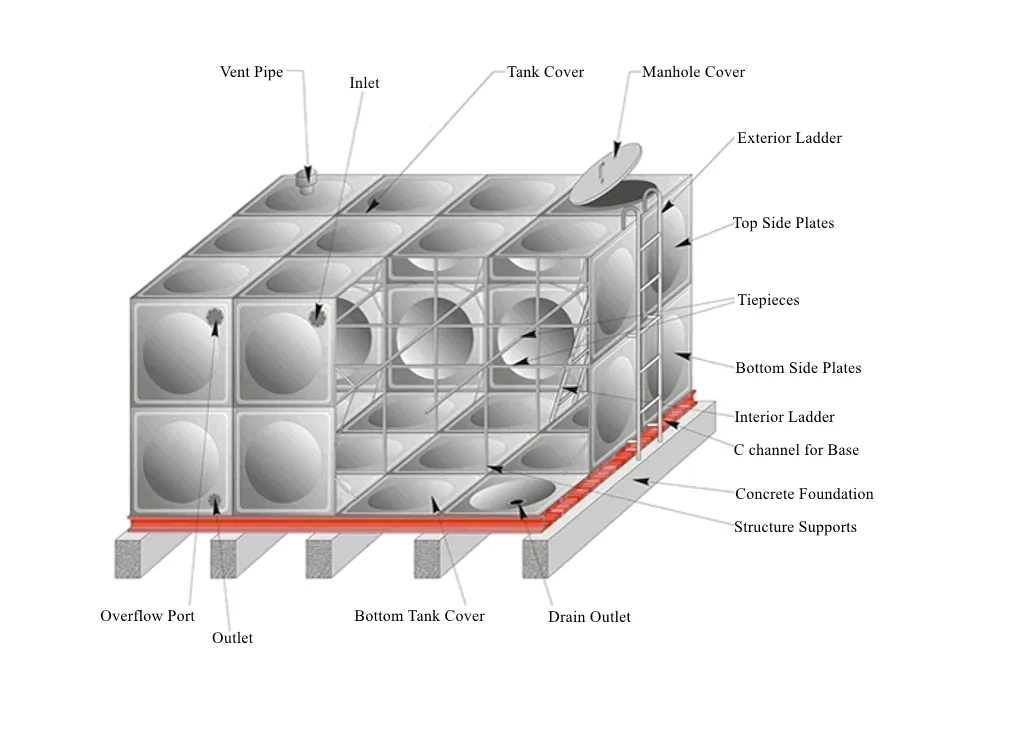loading...
- No. 9, Xingyuan South Street, Dongwaihuan Road, Zaoqiang County, Hengshui, Hebei, China
- admin@zjcomposites.com
- +86 15097380338
- Welcome to visit our website!
frp pultruded profiles
Understanding FRP Pultruded Profiles Applications and Benefits
Fiberglass Reinforced Plastic (FRP) pultruded profiles are increasingly gaining attention in various industrial applications due to their unique properties and benefits. These profiles are created through a continuous manufacturing process known as pultrusion, which involves pulling fibers through a resin bath and then through a heated die to form a solid, rigid shape. This article will explore the characteristics, advantages, and applications of FRP pultruded profiles.
Characteristics of FRP Pultruded Profiles
FRP pultruded profiles are primarily made from glass fibers and thermosetting resins. The glass fibers provide high tensile strength and stiffness, while the resins offer chemical resistance and durability. The pultrusion process allows for the creation of complex shapes, including angles, channels, and beams, making these profiles highly versatile. Additionally, they are available in various sizes and can be customized to meet specific project requirements.
One of the defining features of FRP pultruded profiles is their lightweight nature. Compared to traditional materials like steel or aluminum, FRP is significantly lighter, which can lead to reduced transportation costs and easier handling during installation. Moreover, these profiles exhibit excellent corrosion resistance, making them suitable for harsh environments where metals may degrade over time.
Advantages of Using FRP Pultruded Profiles
The benefits of utilizing FRP pultruded profiles are numerous. First and foremost, their strength-to-weight ratio is outstanding, allowing for the construction of lightweight structures that do not compromise on strength. This characteristic is particularly advantageous in applications where weight is a critical factor, such as in aerospace or automotive industries.
Another significant advantage is their long service life. FRP profiles are resistant to corrosion, UV degradation, and chemical exposure, which translates to lower maintenance costs and a reduced need for repairs or replacements over time. This longevity also contributes to sustainability, as fewer resources are needed for manufacturing and disposing of materials over the product's lifecycle.
frp pultruded profiles

Additionally, FRP pultruded profiles are non-conductive, making them ideal for electrical applications where safety is a concern. Their insulating properties prevent electricity from passing through, reducing the risk of electrical accidents.
Applications of FRP Pultruded Profiles
The applications of FRP pultruded profiles are vast and varied. They are commonly used in the construction industry for building frameworks, ladders, walkways, and railings. Their lightweight and corrosion-resistant properties make them especially suitable for bridges and offshore structures.
Additionally, FRP profiles are prevalent in the electrical sector, where they are used in utility poles, cable trays, and enclosures for electrical equipment. Their non-conductive nature enhances safety and reliability in electrical installations.
In the chemical and wastewater treatment industries, FRP profiles are used for tanks, piping, and fittings, benefiting from their chemical resistance and durability against harsh liquids.
Conclusion
FRP pultruded profiles represent a modern, efficient alternative to traditional construction materials. Their combination of lightweight, strength, corrosion resistance, and electrical insulation makes them suitable for a wide range of applications across various industries. As technology continues to evolve, the potential for FRP profiles to enhance structural integrity and efficiency will likely expand, leading to even broader adoption in the future.
-
The Rise of FRP Profiles: Strong, Lightweight, and Built to LastNewsJul.14,2025
-
SMC Panel Tanks: A Modern Water Storage Solution for All EnvironmentsNewsJul.14,2025
-
GRP Grating: A Modern Solution for Safe and Durable Access SystemsNewsJul.14,2025
-
Galvanized Steel Water Tanks: Durable, Reliable, and Ready for UseNewsJul.14,2025
-
FRP Mini Mesh Grating: The Safer, Smarter Flooring SolutionNewsJul.14,2025
-
Exploring FRP Vessels: Durable Solutions for Modern Fluid HandlingNewsJul.14,2025
-
GRP Structures: The Future of Lightweight, High-Performance EngineeringNewsJun.20,2025
